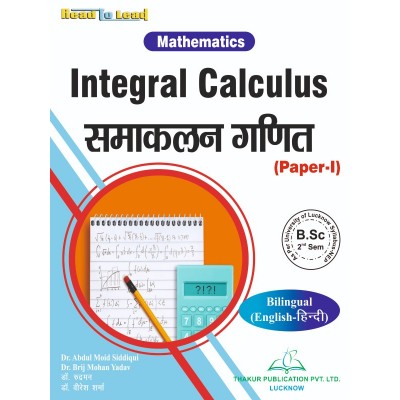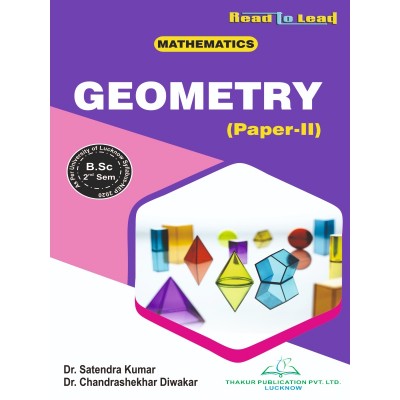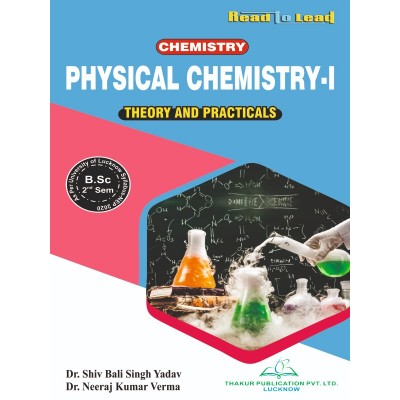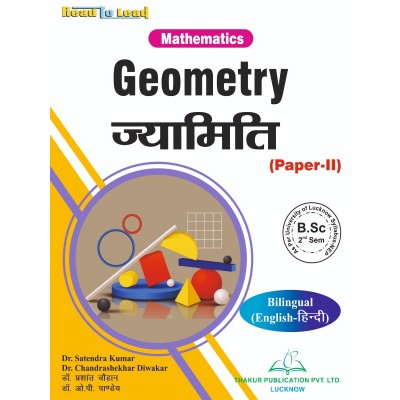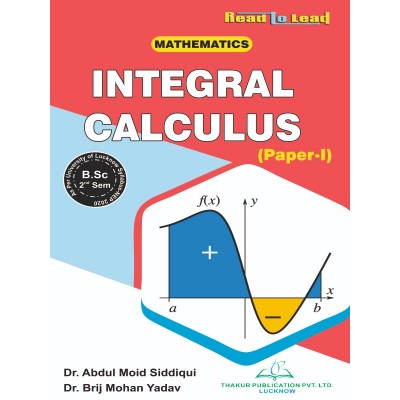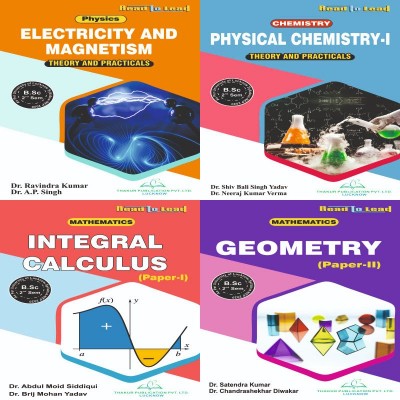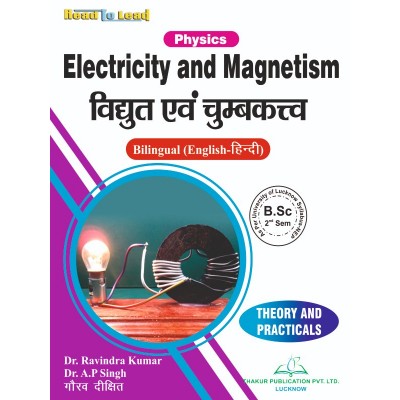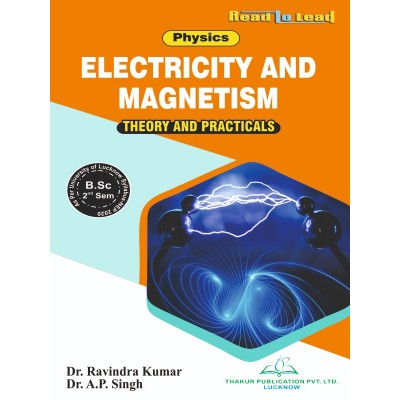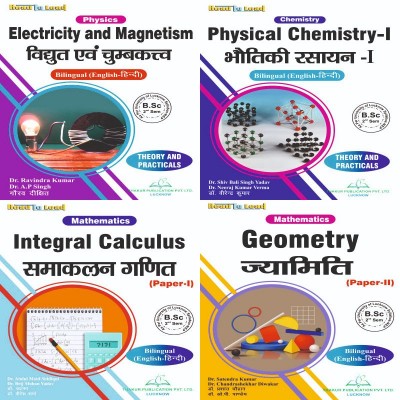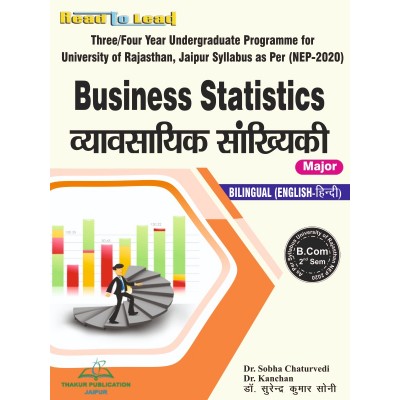Categories
- Pharmacy
-
Nursing
-
MBA
-
BBA
- U.P. State University
- Veer Bahadur Singh Purvanchal University, Jaunpur
- Chaudhary Charan Singh University, Meerut
- Dr. Bhimrao Ambedkar University, Agra
- Chhatrapati Shahu Ji Maharaj University, Kanpur
- Mahatma Jyotiba Phule Rohilkhand University, Bareilly
- Mahatma Gandhi Kashi Vidyapith, Varanasi
- Dr. Ram Manohar Lohia Avadh University, Ayodhya
- Deen Dayal Upadhyaya Gorakhpur University
- Prof. Rajendra Singh (Rajju Bhaiya) University, Prayagraj
-
BCA
- UP State Universities
- University of Pune
- I.K.Gujral Punjab Technical University (PTU)
- University of Rajasthan
- Rashtrasant Tukadoji Maharaj Nagpur University
- Uttar Pradesh NEP2020
- University of Rajasthan ,Jaipur (According to NEP-2020)
- BCCA (B. Com - Computer Science)
- Haryana
- West Bengal
- BBA (CA)
- PUNE BCA (Sci,Commerce)/B.Com (CA)
- Dr. A. P. J. Abdul Kalam Technical University, Lucknow ( AKTU )
- MCA
-
B Ed
- Lucknow University B.Ed Books
- Chaudhary Charan Singh University/Maa Shakambhari University, Saharanpur
- Dr Bhim Rao Ambedkar University, Agra
- Mahatma Gandhi Kashi Vidyapeeth, Varanasi
- Chhatrapati Shahu Ji Maharaj University
- Prof. Rajendra Singh (Rajju Bhaiya) University, Prayagraj (PRSU)
- Mahatma Jyotiba Phule Rohilkhand University(Mjpru), Bareilly
- Dr. Ram Manohar Lohia Avadh University, Ayodhya
- Bundelkhand University, Jhansi
- B.A,B.ed
- B.Sc, B.ed
- Deen Dayal Upadhyaya Gorakhpur University
- Veer Bahadur Purvanchal University (VBPU)
- Maharaja Suhel Dev State University ,Azamgarh (MSDSU)
- Raja Mahendra Pratap Singh State University, Aligarh (RMPSSU)
- Barkatullah Vishwavidyalaya (Bhopal)
- Jiwaji University (Gwalior)
- Vikram University (Ujjain)
- Dr. Harisingh Gour University (Sagar)
- Devi Ahilya Vishwavidyalaya (Indore)
- Rani Durgavati Vishwavidyalaya (Jabalpur)
- Awadhesh Pratap Singh University (Rewa)
- Maharaja Chhatrasal Bundelkhand University (Chhatarpur)
- D. EL. ED
- TET
-
B Com
-
B Sc
- B.Sc. U.P. State Universities Common Syllabus NEP
- Veer Bahadur Singh Purvanchal University, Jaunpur
- University of Lucknow
- Chaudhary Charan Singh University, Meerut
- Madhya Pradesh
- Chhatrapati Shahu Ji Maharaj University, Kanpur
- Dr. Bhimrao Ambedkar University, Agra
- Mahatma Gandhi Kashi Vidyapith, Varanasi
- DEEN DAYAL UPADHYAYA GORAKHPUR UNIVERSITY
- Prof. Rajendra Singh (Rajju Bhaiya) University, Prayagraj
- Dr. Ram Manohar Lohia Avadh University, Ayodhya
- Mahatma Jyotiba Phule Rohilkhand University, Bareilly
- Uttarakhand State Universities
- B.Sc. Bihar Universities Common Syllabus NEP
- University of Rajasthan (Jaipur)
- Haryana
-
Bachelor of Arts [B.A.]
- B.A. Of U.P. State Universities Common Syllabus NEP
- Veer Bahadur Singh Purvanchal University, Jaunpur
- University of Lucknow
- Chaudhary Charan Singh University, Meerut
- Chhatrapati Shahu Ji Maharaj University, Kanpur
- Dr. Bhimrao Ambedkar University, Agra
- Mahatma Gandhi Kashi Vidyapith, Varanasi
- Deen Dayal Upadhyaya Gorakhpur University
- Prof. Rajendra Singh (Rajju Bhaiya) University, Prayagraj
- Dr. Ram Manohar Lohia Avadh University, Ayodhya
- Mahatma Jyotiba Phule Rohilkhand University, Bareilly
- Madhya Pradesh
- Uttarakhand
- Bihar
- University of Rajasthan (Jaipur Syllabus as Per NEP2020)
- Haryana NEP-2020
- B Tech
- LLB
- SWA Education
(CHEMISTRY ) Physical Chemistry - I भौतिक रसायन - I
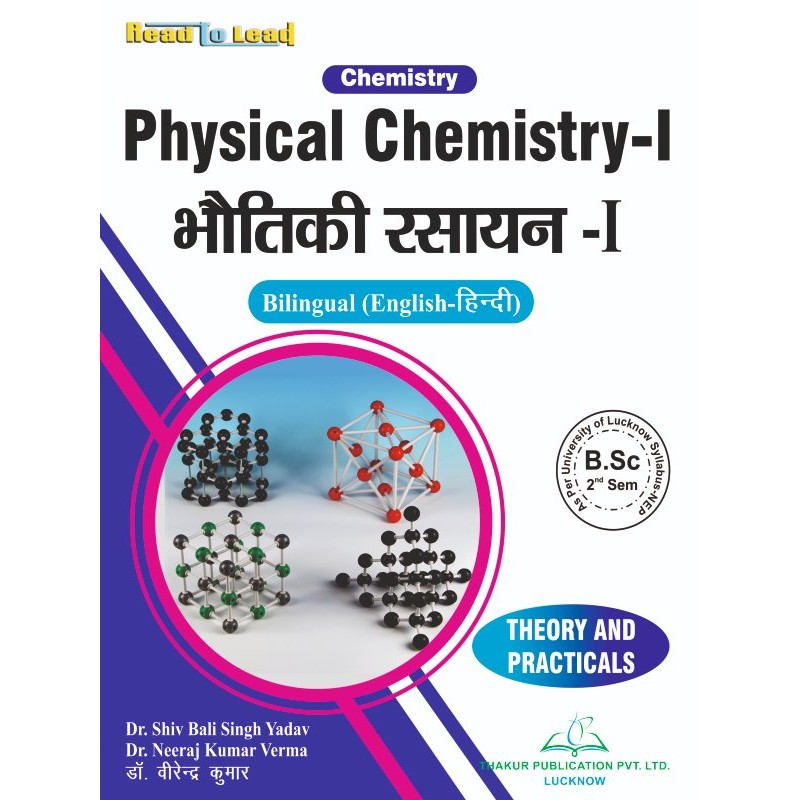
AUTHORS : Dr. Shiv Bali Singh Yadav , Dr. Neeraj kumar Verma , Dr. Virendra Kumar
ISBN : 9789357551700
Tax excluded
AUTHORS : Dr. Shiv Bali Singh Yadav , Dr. Neeraj kumar Verma , Dr. Virendra Kumar
ISBN : 9789357551700
Syllabus
Physical Chemistry – I
|
Unit-I
|
|
I. Mathematical Concepts: Logarithmic relations, curves scratching, equation of straight line and slopes, tracing of curves, differentiation of simple functions like x, ex, xn, sinx, logx; maxima and minima, partial differentiation. Integration of some useful/relevant functions; Permutations and Combinations. Factorials, Probability.
II. Computers: General introduction to computers, different components of a computer. Hardware and Software, input-output devices, binary numbers and its arithmetic; introduction to computer languages, Programming and operating systems. |
|
Unit- II
|
|
III. Gaseous State: Deviation of gases from ideal behaviour, van der Waals equation of State.
IV. Critical Phenomenon: PV isotherms of real gases, continuity of states, the isotherms of van der Waals equations, relationship between critical constants and van der Waals constants, the law of corresponding states, reduced equation of states.
V. Molecular Velocities: Qualitative discussion of the Maxwell's distribution of molecular velocities, collision numbers, mean free path and collision diameter. Liquification of gases (based on Joule Thomson effect).
VI. Liquid State: A qualitative description of intermolecular forces, structure of liquids,structural differences between solids, liquids and gases.
VII. Liquid Crystals: Difference between liquid crystal, solid and liquid. Classification, structure of nematic, smectic and cholestric liquid crystals. Thermography and seven segment cell. |
|
Unit- III |
|
VIII. Solid State: Definition of unit cell and space lattice. IX. Laws of Crystallography:
X. Diffraction X-ray: Diffraction by crystals. Derivation of Bragg's equation. Laue’s method and powder method, determination of crystal structure of NaCl, KCl and CsCl
XI. Colloidal State: Solids in liquids (sols): properties- Kinetic, optical and electrical; stability of colloids, protective action, Hardy-Schulz law, goldnumber.
XII. Liquids in Liquids (Emulsions): Types of emulsions, preparation. Emulsifier. XIII. Liquids in Solids (Gels): Classification, preparation and properties, inhibition, general applications of colloids. |
|
Unit- IV |
|
XIV. Chemical Kinetics:
XV. Catalysis: Catalysis, classification of catalysis, characteristics of catalyzed reactions. |
पाठ्यक्रम
भौतिक रसायन-प्
न्दपज.प्
प्ण् गणितीय अवधारणाएँ-लघुगणक संबंध, वक्र स्क्रैचिंग, सीधी रेखा और ढलानों का समीकरण, वक्रों का पता लगाना, गए मगए गदए ेपदगए सवहग जैसे सरल फलन का विभेदन; उच्चिष्ठ और निम्निष्ठ, आंशिक विभेदन। कुछ उपयोगी/प्रासंगिक फलनों का समाकलन, क्रमपरिवर्तन और संयोजन, क्रमगुणित, प्रायिकता।
प्प्ण् कम्प्यूटर- कम्प्यूटर का सामान्य परिचय, कम्प्यूटर के विभिन्न घटक। हार्डवेयर और सॉफ्टवेयर, इनपुट-आउटपुट डिवाइस, बाइनरी नंबर और इसके अंकगणितिय; कम्प्यूटर भाषाएँ, प्रोग्रामिंग और ऑपरेटिंग सिस्टम का परिचय।
न्दपज. प्प्
प्प्प्ण् गैसीय अवस्था- आदर्श व्यवहार से गैसों का विचलन, अवस्था के वॉण्डर वाल्स समीकरण।
प्टण् क्रान्तिक परिघटना- वास्तविक गैसों की च्ट समताप रेखाएँ, अवस्थाओं की निरंतरता, वॉण्डर वाल्स समीकरणों की समतापी रेखाएँ, क्रांतिक स्थिरांकों और वॉण्डर वाल्स स्थिरांकों के बीच संबंध, संगत अवस्थाओं का नियम, समानीत अवस्था समीकरण।
टण् आणविक वेग- आणविक वेग, टक्कर संख्या, माध्य मुक्त पथ और आणिवक वेग के मैक्सवेल के वितरण की गुणात्मक विवेचना, गैसों का द्रवीकरण (जूल थॉमसन प्रभाव पर आधारित)।
टप्ण् तरल अवस्था- अंतर-आणविक बलों का गुणात्मक विवरण, तरल पदार्थों की संरचना, ठोस, तरल और गैसों के बीच संरचनात्मक अंतर का गुणात्मक विवरण।
टप्प्ण् द्रव क्रिस्टल- द्रव क्रिस्टल, ठोस और तरल में अंतर, नेमैटिक, स्मेक्टिक और कोलेस्ट्रिक द्रव क्रिस्टलों का वर्गीकरण, संरचना, तापलेखन और सात खंड सेल।
न्दपज. प्प्प्
टप्प्प्ण् ठोस अवस्था- यूनिट सेल और त्रिविम जालक की परिभाषा।)
प्ग्ण् क्रिस्टलोग्राफी का नियम-
ंण् अंतरापृष्ठीय कोणों की स्थिरता का नियम
इण् परिमेय सूचकांको का नियम
बण् क्रिस्टल में समरूपता तत्व और समरूपता का नियम
ग्ण् विवर्तन-क्रिस्टल द्वारा एक्स-रे विवर्तन। ब्रैग के समीकरण की व्युत्पत्ति। लाऊ की विधि और पाउडर विधि, छंब्सए ज्ञब्स और ब्ेब्स की क्रिस्टल संरचना का निर्धारण
ग्प्ण् कोलॉइडल अवस्था- तरल पदार्थ (सॉल) में ठोस- गुण-गतिज, प्रकाषिक और विद्युतीय; कोलॉइड्स की स्थिरता, सुरक्षात्मक क्रिया, हार्डी-शुल्जे नियम, गोल्ड संख्या
ग्प्प्ण् तरल पदार्थ में तरल पदार्थ (इमल्शन)- इमल्शन के प्रकार, तैयारी, पायसीकारक
ग्प्प्प्ण् ठोस पदार्थों में तरल पदार्थ (जेल)- वर्गीकरण, तैयारी और गुण, संदमन, कोलाइड्स के सामान्य अनुप्रयोग
न्दपज. प्ट
ग्प्टण् रासायनिक बल गतिकी
ंण् आणविकता और अभिक्रिया का कोटि, दरों की सक्रियता निर्भरता, समाकलित दर व्यंजक के लिए- शून्य कोटि, प्रथम कोटि, द्वितीय कोटि, छद्म कोटि अभिक्रियाएं, अर्द्ध-आयु
इण् अभिक्रिया की कोटि का निर्धारण- विभेदक विधि, समाकलन की विधि, अर्ध-आयु विधि और विगलन विधि।
बण् रासायनिक बल गतिकी के अध्ययन के प्रायोगिक तरीकों की संक्षिप्त रूपरेखा- चालकतामितीय, विभवमापीय, प्रकाषिक तरीके, ध्रुवणमिति और स्पेक्ट्रोप्रकाषमिति
कण् रासायनिक बल गतिकी के सिद्धांत- अभिक्रिया दर का आरहेनियस सिद्धांत, अभिक्रिया की दर पर तापमान का प्रभाव, सक्रियण ऊर्जा की अवधारणा। कठोर गोला मॉडल पर आधारित सरल टक्कर सिद्धांत, संक्रमण अवस्था सिद्धांत (साम्यावस्था परिकल्पना)। संक्रमण अवस्था सिद्धांत का ऊष्मागतिकी पहलू।
ग्टण् उत्प्रेरण- उत्प्रेरण, उत्प्रेरण का वर्गीकरण, उत्प्रेरित अभिक्रियाओं के लक्षण
9 other products in the same category:
Your review appreciation cannot be sent
Report comment
Report sent
Your report cannot be sent
Write your review
Review sent
Your review cannot be sent









